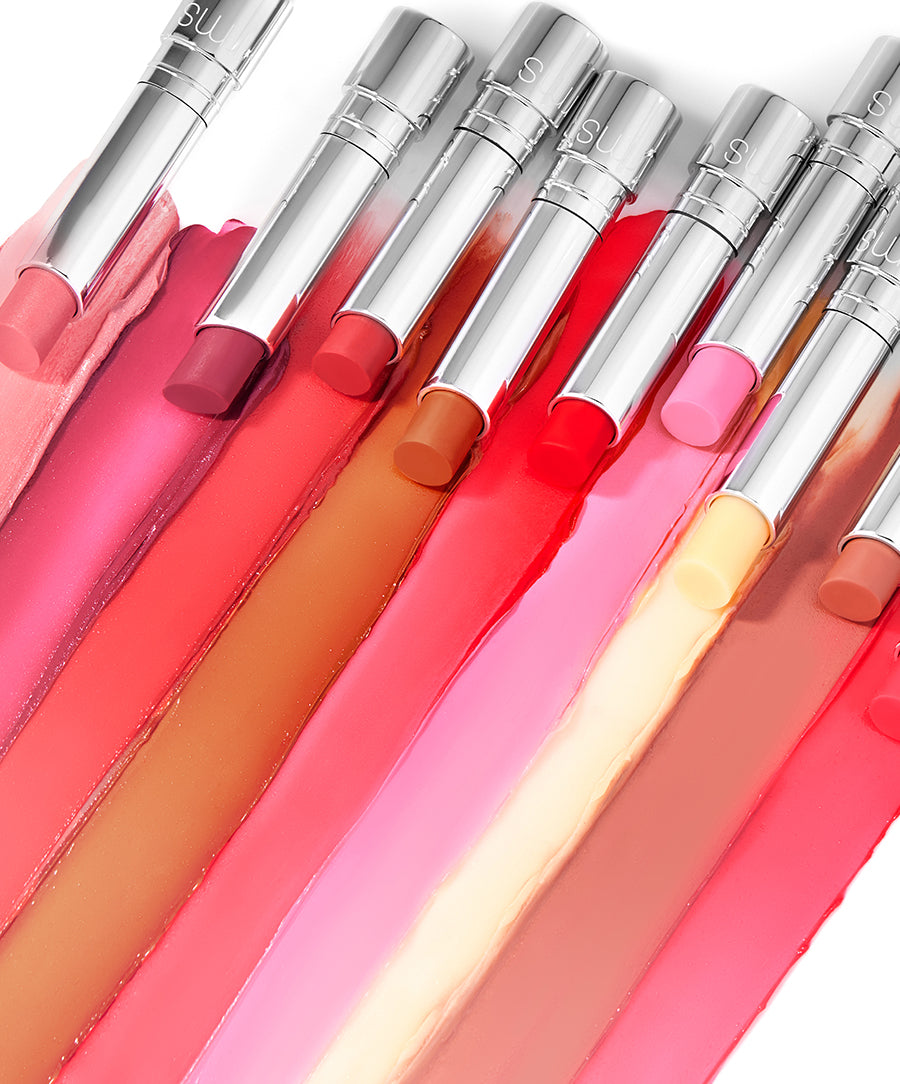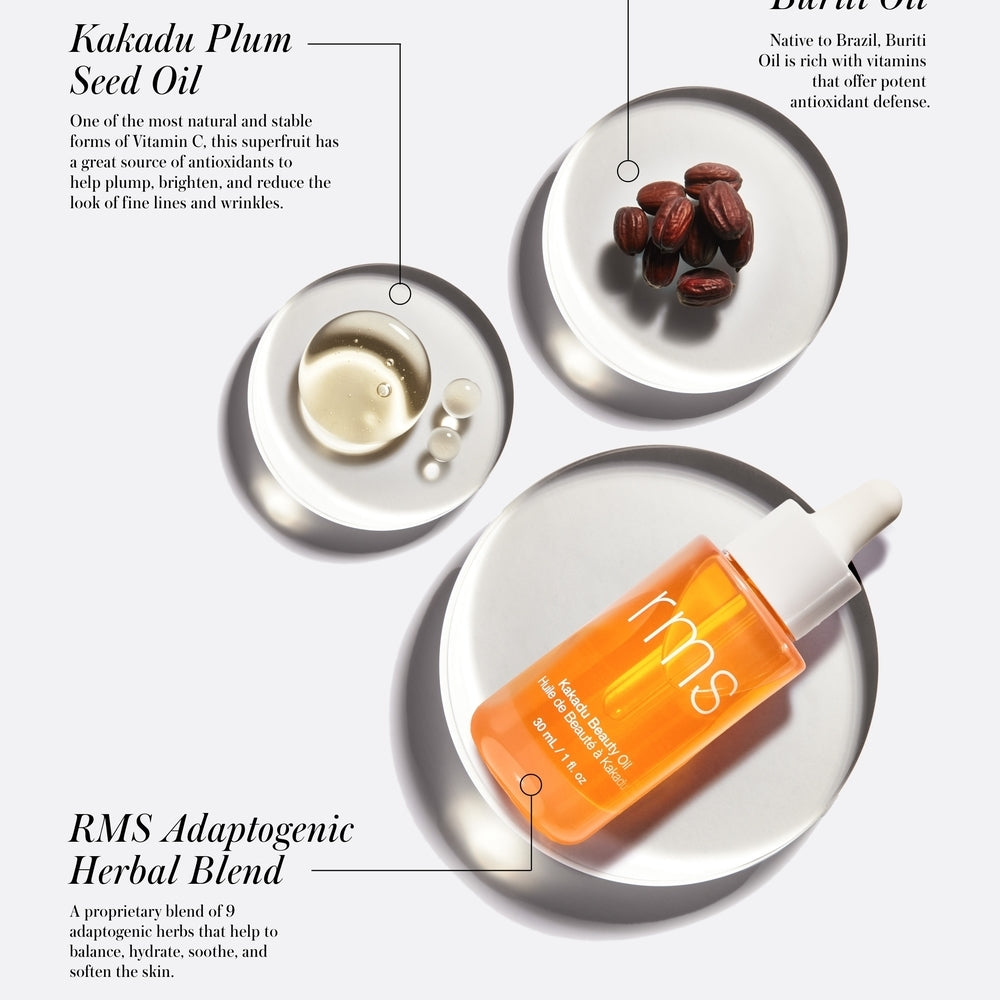Lip Balm vs. ChapStick: What’s the Difference?

Chapped, irritated lips can happen during any season. In the winter months, cold, dry air steals your lip’s moisture. In the summer, the sun can feast on unprotected lips, burning them and leaving them red and raw.
Our first instinct is to grab a lip balm, and most of us don’t ever stop to consider what’s actually inside the lip balm that makes it work and provides relief to our parched pouts.
The team at RMS Beauty studies popular product ingredients carefully, and we’ll admit we’re extremely discriminating when it comes to the ingredients that make the cut for our own products. Safety and benefit are our top priorities, and we won’t compromise one for another.
For lip care products, it’s extremely important to be aware of product ingredients. Much of what is spread on our lips ends up in our mouths and in your system, so if a product contains a known toxin, it’s a bad idea to use it, even if it feels cool and tingly when applied. Lips are extremely vulnerable to chemicals and cheap undesirable ingredients, as they tend to absorb easier.
We’ll talk about what you really need in a lip balm, what ingredients to avoid, and fill you in on the difference between lip balm and ChapStick.
What is a Lip Balm?
Lip balm is a waxy substance that is placed on the lips to provide moisture, hydration, and to help heal and restore the dry, chapped skin of the lips. The wax helps to seal in moisture to protect the lips from dehydration, which often results in chapped lips.
Lips that are chapped are often:
- Dry
- Chapped
- Peeling
- Cracked
- Bleeding
- Painful, tight, and uncomfortable
Lip balm is a quick fix solution for the dry, chapped skin of the lips.
Your lips can become hydrated fairly easily. Because your lips are made of a special type of skin, called the stratified squamous epithelium, the skin is especially thin and fragile. Keeping it properly hydrated can be difficult, especially during seasons of intense heat or cold.
As for the difference between lip balm and ChapStick? There aren’t any.
ChapStick is a brand name trademark for lip balm. It’s a particular brand of lip balm that has been around for decades. However, the ingredients you find in popular lip product brands may surprise you, so always research the ingredients listed on the back of the product or box.
Popular Lip Balm Ingredients
We have a habit of assuming that anything we buy from the corner store is safe for use. And technically, according to the agencies that “regulate” cosmetics, anything you find in your store has been approved for use.
The problem is that the cosmetics industry in the U.S. is woefully underregulated -- in fact, only synthetic color is regulated at all, so in many cases, companies regulate themselves, like a fox guarding the chicken coup. Many ingredients that make their way into the products we use in the U.S. are banned in other countries due to the evidence of their toxicity and risk of harm.
Here are some of the most popular ingredients in lip balms. If you aren’t sure if your lip balm may contain these ingredients, check out the product brand’s website.
Phenol and Menthol and Salicylic Acid (Oh My)
That icy, tingly feeling you get when you sweep on your favorite medicated lip balm comes at a cost. Medicated lip balm is full of chemical ingredients that actually make the lips drier.
Phenol, menthol, and salicylic acid are all drying ingredients. While they do provide the feeling of immediate relief and comfort, they absorb moisture in the lips, leaving you feeling dry just a few hours (or even minutes) later.
If you’ve ever thought you might be “addicted” to your lip balm, you could be right. The more you use a lip balm that contains phenol, menthol, and/or salicylic acid, the more you’ll need to use it to make up for the fact that it’s drying.
Although salicylic acid works well as an exfoliant, you shouldn’t need an exfoliant on your lips every time you need to apply lip balm. Completely removing the top layer of lip skin each time you apply your lip product will leave lips raw and irritated.
Parabens
By now we’ve all received the message: parabens are bad, but few of us actually know what parabens are and why they’re harmful.
Parabens are used in cosmetics as preservatives to extend the shelf life of your products. The use of parabens in your cosmetics is why you can still use that foundation that’s been floating around in your makeup bag for half a decade (although we seriously wouldn’t recommend it).
Unfortunately, this shelf life comes at a cost. Parabens are known endocrine (read: hormone) disrupters. They are able to interfere with estrogen in a woman’s body, and in a man’s body they can interfere with testosterone levels.
You won’t know if your product contains parabens unless you’re familiar with how they appear in a product’s ingredient list. Popular parabens you may see on your ingredients list are butylparaben, isobutylparaben, isopropylparaben, and propylparaben.
Mosty parabens have an Environmental Working Group rating of 9 or higher, which means there is a lot of research and evidence that points to their potential harm and toxicity.
Lip balm is a favorite place for parabens to hide out, and this is an item that is going directly onto your mouth.
Petroleum
You grew up with it, used petroleum jelly on your baby’s bottom, and reach for it every time you have a bit of dry skin, but is petroleum a safe product ingredient? The fast answer is, no.
Petroleum is unsafe mostly because of the process used to refine it and purify it to make it usable in cosmetic products. Most of the time, chemical agents and heat are used, which can contaminate the product and make it unsafe.
In addition, petroleum isn’t a skin beneficial ingredient, even in lip balm. It’s a dead product that creates an airtight barrier on the skin, which doesn’t allow your skin to breathe. The oxygenation of your skin (i.e. your skin getting proper oxygen in the cells) is crucial to maintaining its overall health and moisture levels.
Fragrances and Flavors
Everyone loves the smell and flavor of a potent lip balm, but be wary. The ingredients that make lip balms highly scented and/or flavorful aren’t always safe, and probably won’t leave you wanting to lick your lips.
Fragrance and flavor in cosmetic products is considered proprietary, which means a brand doesn’t have to disclose the exact ingredients that make up their fragrance and flavor on the label of their product.
The FDA, the agency that governs cosmetic products, allows under U.S. regulations for fragrance and flavor ingredients to be listed simply as “Fragrance” or “Flavor.” As such, you can never be certain what’s in the product.
The ingredients in a product that goes directly onto your lips, and as such has complete access to your mouth, should be completely safe. Additionally, you shouldn’t have to compromise safety to get your hands on a product that actually works. Products should be safe and effective.
Healing Dry, Chapped Lips the Natural Way
All natural, green-beauty based lip balm is the safest and most effective way to heal and restore health to dry, chapped lips. Synthetic ingredients are much more susceptible to ingestion in a lip balm than they are in any other product, which makes them unsafe options.
Thankfully, the ingredients we find in nature are not only safer and more beneficial for chapped lips, they’re extremely more effective.
Here’s how you can keep your lips hydrated and choose a better overall lip balm.
Get Quality Ingredients
You know what to avoid, so let’s talk about ingredients that can help keep your lips soft, smooth, and hydrated.
- Jojoba oil. This oil is rich in antioxidants and the closest to our skin’s natural oil (sebum). As such, the skin rapidly absorbs it and locks in moisture, which allows it to deeply hydrate.
- Organic cocoa seed butter. This lip-quenching butter contains nourishing vitamin E that helps restore lips to their natural moisture level.
- Candelilla Wax. The better and more natural alternative to synthetic wax and petroleum, this plant-based wax is rich in vitamins and protective antioxidants and helps protect the skin by sealing in moisture (without suffocating the skin).
- Beeswax. It’s loaded with amino acids and it actually the best wax ever for the skin!
Products to try:
- RMS Tinted Daily Lip Balm. This highly nourishing lip balm contains all three of the above ingredients in a lightly tinted balm that leaves lips feeling hydrated, comfortable, and never steals their natural moisture.
- RMS Raw Coconut Cream. For lips that are in serious need of instant relief, our raw coconut cream is the solution. Formulated with 100% pure, raw and unrefined organic coconut oil, this cream is excellent for penetrating chapped, cracked lips without burning or stinging, and helps heal and restore lip’s natural moisture level. It is also known for its high levels of lauric and caprylic acid, which have antifungal and antibacterial properties.
Increase Your Water Intake
Chapped lips can sometimes be a symptom of a deeper problem, like dehydration. If you want to keep your lips as hydrated as possible, consuming enough water each day is crucial. Aim for 91 ounces of water a day, i.e. about 12 cups. Yes, really -- you do need that much.
Humidifier
You can use a humidifier in your room while you sleep to increase moisture to your lips. This is especially important in dry, arid climates and in the winter when indoor heaters are in use.
Final Thoughts
Lip balm and ChapStick are both products that are made to help keep your lips moisturized. ChapStick is simply a brand name.
However, what’s inside your lip balm is the key to finding a product that truly takes care of your lips and keeps them properly hydrated without drying them out.
This information for RMS was fact checked by an expert in the beauty industry: Rose-Marie Swift
Sources:
https://health.clevelandclinic.org/7-signs-your-lip-balm-use-is-just-a-bad-habit/
https://www.ewg.org/skindeep/ingredients/705335-propylparaben/
https://www.fda.gov/cosmetics/cosmetic-ingredients/fragrances-cosmetics
https://share.upmc.com/2017/02/how-to-treat-chapped-lips/?vwo=header_redesign
http://medcell.med.yale.edu/histology/epithelia_lab/stratified_squamous.php









